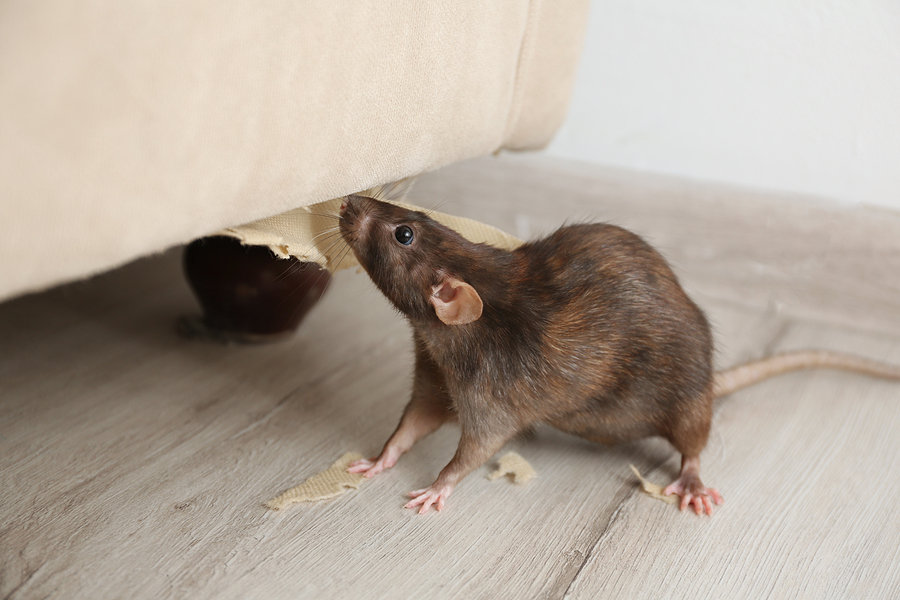Rodent Control in Grain Storage: Safeguard Your Supply
Share
Storing grains effectively is a critical task for both farmers and businesses. One of the most pressing challenges faced in this domain is rodent control in grain storage. Not only do rodents pose a threat to the quality and quantity of stored grains, but they also bring about significant financial losses and health risks. Tackling this issue requires understanding, vigilance, and a strategic approach.

Why Is Rodent Control in Grain Storage Important?
One might wonder why rodent control is emphasized so strongly when it comes to grain storage. The answer lies in the fact that rodents are notorious for causing extensive damage. A few unchecked rodents can rapidly breed into a large population, posing a significant threat to your stored grains. They consume the grains, contaminate them with droppings and urine, and can also introduce diseases that are harmful to humans.
According to experts at Community Garden Rodent Prevention, the presence of rodents can reduce grain quality drastically, making them unfit for human and animal consumption. This not only affects food safety but also the economic stability of those depending on the grain sales.
Understanding Rodent Behavior
To effectively manage and prevent rodent infestations, it's essential to understand their behavior. Rodents are highly adaptable creatures. They tend to nest in close proximity to their food sources and are known for their ability to squeeze through small openings. This makes them particularly challenging to control.
Rodents such as rats and mice have strong senses of smell and taste, which they use to locate food. They are nocturnal creatures, which means they are most active at night, making it difficult to detect them during the day. Knowing these behaviors is crucial for implementing effective rodent control measures.
Common Types of Rodents in Grain Storage
Two of the most common rodents found in grain storage facilities are the house mouse and the brown rat. The house mouse is small, weighing around 0.5 ounces, and can reproduce rapidly. The brown rat is larger and known for its destructive chewing habits. Understanding these rodents' characteristics can help tailor your control strategies.
Effective Strategies for Rodent Control
Implementing a combination of preventive and active measures can significantly reduce the risk of rodent infestations in grain storage facilities. Here are some strategies that can be employed:
1. Structural Maintenance
Ensure that all potential entry points are sealed. This includes cracks in walls, gaps under doors, and openings around pipes. Regular maintenance checks should be conducted to identify and repair any structural vulnerabilities.
2. Sanitation and Hygiene
Maintain cleanliness in and around storage areas. Remove any spilled grains immediately, as they attract rodents. Regularly clean storage equipment and ensure that waste materials are disposed of properly.
3. Use of Natural Repellents
Natural repellents can be an eco-friendly way to deter rodents. For instance, peppermint oil is known to be a natural deterrent. Spraying it in storage areas can help keep rodents at bay. For more on natural repellents, check out this guide on natural mouse repellents.
4. Trapping and Monitoring
Regular monitoring using traps can help detect rodents early. Use humane traps to capture and relocate rodents. Placing traps along walls and in dark corners can be effective, as these are common rodent pathways.
Long-Term Prevention
Long-term prevention is key to ensuring that your grain storage remains rodent-free. Regularly review and update your rodent control strategies to adapt to any new challenges. Engage with pest control professionals for expert advice and services. Regular audits and inspections can also help in identifying emerging threats and addressing them promptly.
Incorporating a comprehensive plan that includes maintenance, hygiene, and vigilant monitoring can safeguard your grain supply. For further insights on safeguarding your storage, visit Winterizing Home Against Mice.

Frequently Asked Questions
What are the signs of a rodent infestation in grain storage?
Common signs include droppings, gnaw marks, tracks, and a musky odor. You might also notice damaged grain bags or containers.
How can I prevent rodents from entering my grain storage facility?
Seal all entry points, maintain cleanliness, and use natural repellents. Regularly inspect the facility for any signs of rodent activity.
Are natural repellents effective for rodent control?
Natural repellents like peppermint oil can be effective when used as part of a broader pest management strategy. They are eco-friendly and can deter rodents from entering storage areas.
